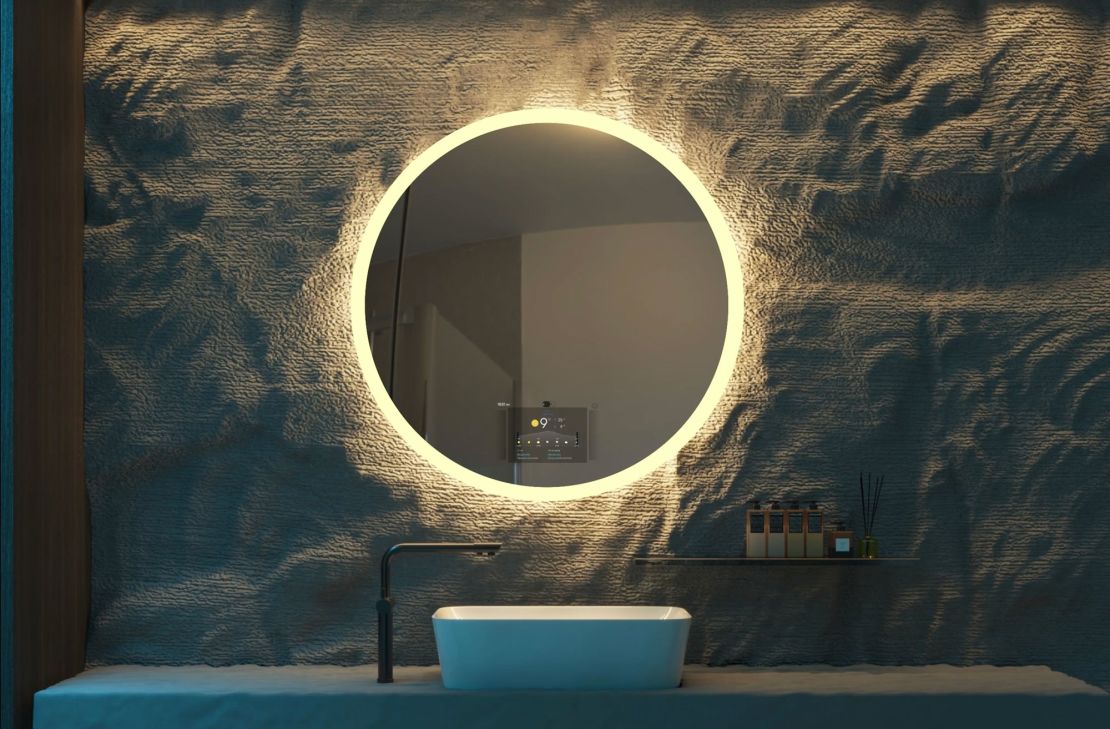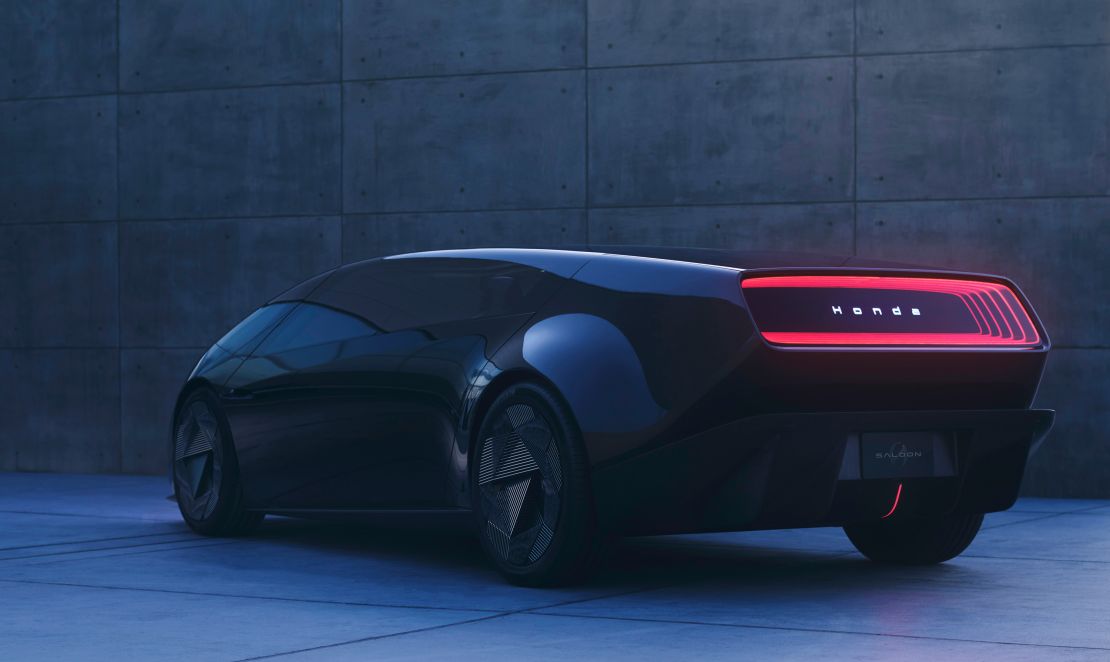Tech companies showed quirky gadgets and new innovations at the Consumer Electronics show in Las Vegas this week, from AI-powered pillows that can reduce snoring and mirrors that can detect your mood to transparent televisions and car mirrors that track your eyes.
Although the event, which is the largest consumer tech conference of the year, is known for robots roaming the show floor, splashy presentations and oddball products, it’s also a hotbed for dealmaking among executives, manufacturers and retailers across various industries.
In addition, CES can set the stage for some of the biggest tech trends of the year and shine a spotlight on how companies intend to be part of those conversations.
Here’s a look at some of the buzziest products announced this week:

AI companions are one of the biggest trends to emerge from the show this year. Loona — a $380 dog-like companion robot — has generated buzz for being the world’s first robot with built-in ChatGPT technology, allowing users to have conversations and interact with the device.
People can play games with it, give it commands or use it as a moveable home monitor.
At the same time, LG’s two-legged companion robot Rosie is more like an AI assistant, with the ability to help out with chores around the house, by integrating with LG appliances and reminding people to take their medication.
Samsung’s buzzy Ballie robot, which was first shown off at CES in 2020, received a refresh. The device can follow users around the house to take phone calls, feed pets and project movies and video calls onto the floor or walls.
Meanwhile, startup Rabbit’s $199 R1 AI pocket-sized companion looks and acts differently from the rest: The walkie talkie-like gadget works alongside smartphone apps. By holding down a button, you can ask it to provide recipes, book flights and make calls.
Dipanjan Chatterjee, an analyst at Forrester Research, said while the simplicity of Rabbit’s gadget is reflective of the type of products that often gets a lot of attention at tech trade shows, it may be a challenge for it to resonate in everyday life.
“The idea of a natural language-driven single interface to manage life’s complexities is as endearing as it is impractical,” he said. “Getting consumers to carry one more device with yet another data plan is a big ask.”

Beyond companions, AI has made its way into nearly every appliance and gadget you could think of this year. There are robots that mow the lawn and plow the snow, and others such as Samsung’s latest lineup of AI-powered mops and vacuums that handle the indoor cleaning.
AI has found its way into unlikely devices, too: Baracoda’s mental health mirror identifies your mood and gives daily affirmations to make you feel better. And the hyped Holobox allows people to talk to others in different parts of the world via an actual hologram, giving the impression you’re right there in the same room.
Apple accessories are getting AI, too. Belkin’s new Qi2 & DockKit Auto Tracking Stand is the first gadget to use Apple’s new DockKit framework, using the iPhone’s facial recognition technology to follow faces and body movements while filming videos (consider it a dream for TikTok influencers).
Beyond gadgets, companies shared their vision for an AI-powered future. Walmart said it is experimenting with a generative AI search tool for iOS users that will let them ask questions about what items to buy for certain occasions.
Amazon gave updates on how some of its developers are integrating generative AI with their voice assistant, Alexa, including how users can now have conversations with different personas, including historical figures, via chatbot service Character.ai.
Chipmakers Nvidia and AMD also showed off new processors that focus on supporting advanced AI capabilities.
But perhaps some of the most impressive AI announcements came from automakers. Volkwagen said it will be adding ChatGPT to its lineup of cars later this year.
“This can be helpful on many levels during a car journey. Enriching conversations, clearing up questions, interacting in intuitive language, receiving vehicle-specific information, and much more – purely hands-free,” the company said in a press release.
Mercedes Benz announced plans to upgrade their in-car voice experience using generative AI, too.
“Voice tech has struggled not because the idea was bad but because the capabilities were sorely lacking,” said Chatterjee. “Generative AI changes all of that. A no-brainer application for voice tech is in cars because there couldn’t be a worse occasion for using your hands for anything else but driving.”

CES offered more car innovation than most auto shows these days. More than ever, it’s become a place for car companies wanting to be seen as tech leaders, not just car companies.
Honda announced a new line of electric vehicles relying on thinner battery packs than most of the ones used today. Vietnamese automaker VinFast, which had some stumbles entering the US market, unveiled a small electric pickup and a really, really small electric SUV. It’s hard to imagine but the VinFast VF 3 four-seat SUV is much more compact bumper to bumper than the new Fiat 500.
VinFast also revealed new technology that can automatically adjust your car’s rear view mirrors as soon as you sit down. No more fiddling with that little knob.
It wouldn’t be CES without some big, super flashy TV innovations. This year, Samsung wowed onlookers with the world’s first transparent MicroLED screen, which looks much like a floating sheet of glass.
LG also showed off its new OLED Signature T model, a 77-inch transparent display. LG was one of the first leaders in transparent TVs; one of its earlier prototypes impressed the show floor back in 2020.
“There’s always something related to TVs that adds buzz to the show, and this year it’s transparent models,” said Jon Erensen, an analyst with market research firm Gartner. ”We will see how expensive they are and how they are used. It’s very neat technology but the question is how practical it is for the everyday consumer, and whether it will be adopted around the house or more novel uses for it outside of the home.”
Health, beauty and wearable tech have long been part of the CES conversation, and this year is no exception.
Withing’s BeamO device, which is small enough to fit in a pocket, is an at-home checkup tool featuring a stethoscope, an oximeter, an ECG and a thermometer.
It allows people to access vital signs while on the go and share with doctors in real-time during telehealth appointments. Meanwhile, a new pillow adjusts the positioning of a sleeper’s head if small movements indicate they could be snoring.
For the hearing impaired, EssilorLuxottica showed off a prototype of its Nuance Audio eyeglasses that also feature built-in hearing aids. In a press release, CEO Francesco Milleri called hearing solutions an “unpenetrated market” with the device’s potential to “improve quality of life for over a billion people.”
Another accessibility item, the Palmplug gloves, is packed with sensors for gamers but can also be used to track hand movements and better enable physical therapy for certain users such as stroke patients.
Traditional health trackers are changing, too. Evie, a health monitoring ring, looks more like jewelry than similar devices on the market; it tracks sleep, steps and provides an overall picture of health and recovery. An AI-powered collar called Minitailz tracks the whereabouts of dogs and cats but also monitors their vitals in real time, flagging owners to any potential health issues.

While Apple was noticeably absent once again at CES, it made headlines this week by announcing its Vision Pro mixed reality headset will be available for purchase in the United States starting on February 2.
“It’s not unusual for Apple to capture headlines even though they don’t attend CES,” said Jitesh Ubrani, an analyst at market research firm IDC. “The imminent arrival of the Vison Pro is likely to have a positive impact on the entire industry as Apple brings awareness like no other.”
For example, Sony teased a mixed reality headset that can be controlled with a smart ring, and Qualcomm unveiled a new Snapdragon chipset for virtual reality headsets.
“[The Vision Pro news] puts a bit of pressure on companies peddling their wares to ensure that they put their best foot forward as everyone in the AR/VR industry is likely going to be compared to Apple,” Ubrani said.
© OfficialAffairs